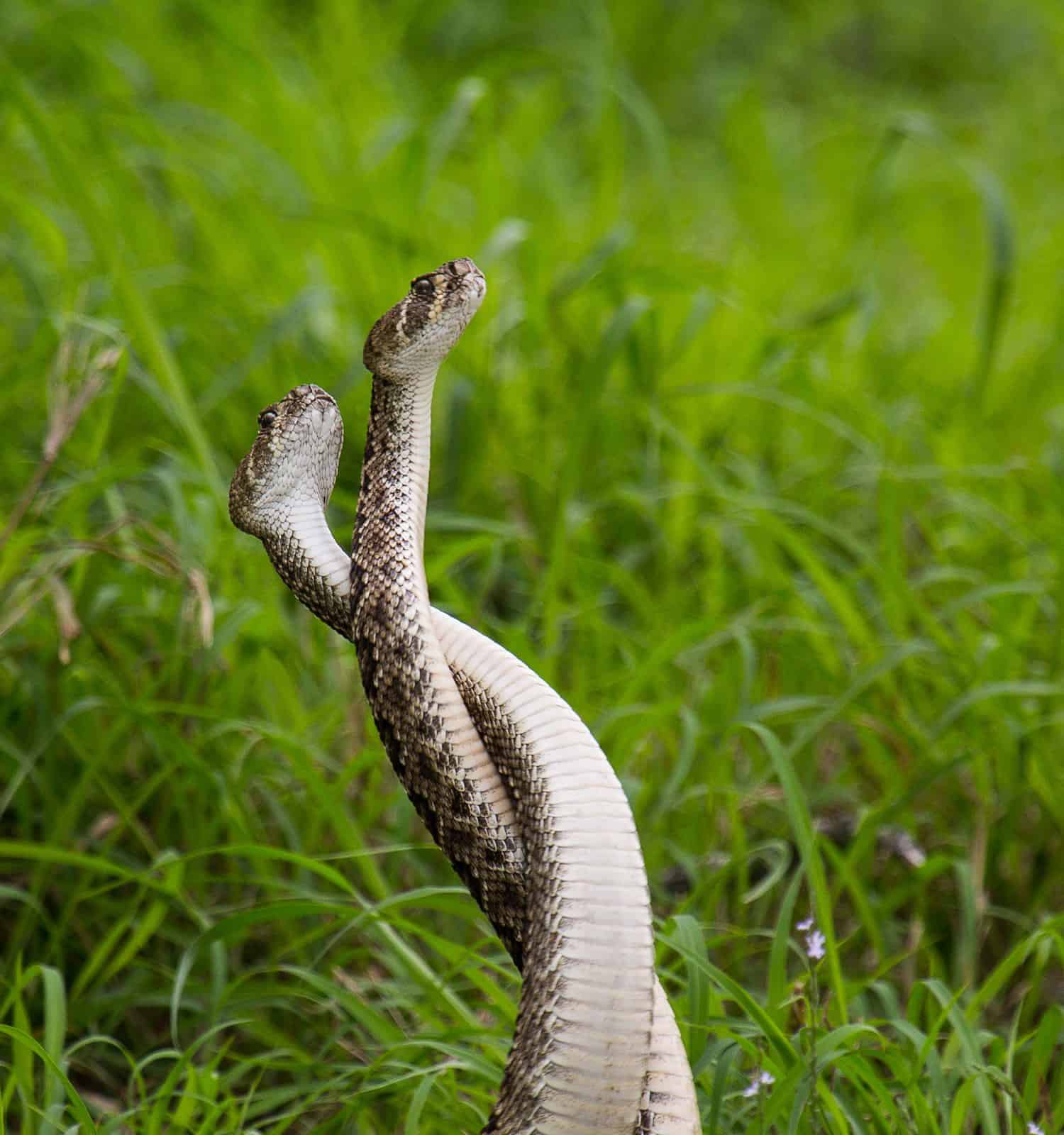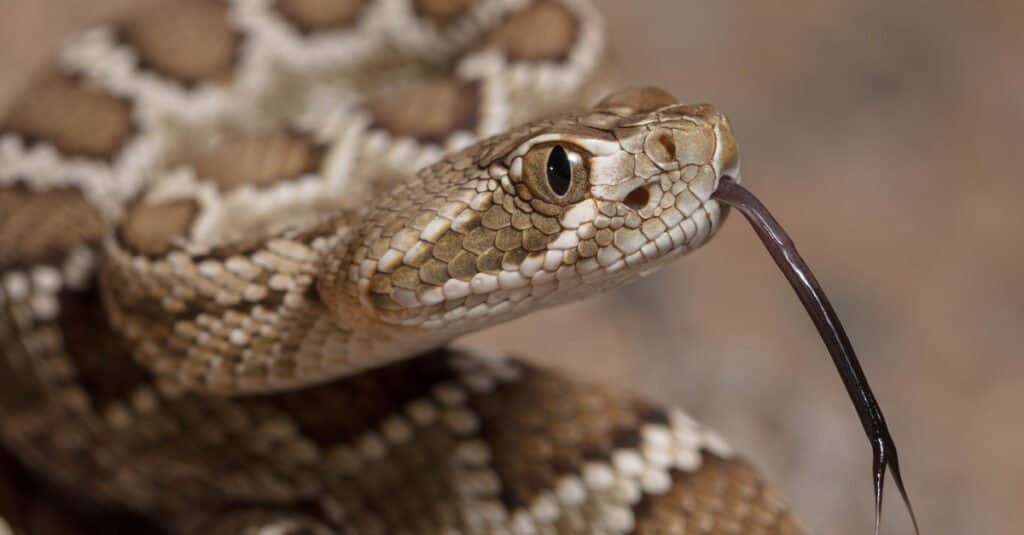Rattlesnakes are one of the most well-known predators in the world. It’s no wonder, with their terrifying rattles, strong muscular bodies, and sharp fangs that they strike fear into the hearts of many. Likewise, they also tend to have some pretty potent venom, which can make them dangerous to humans.
Don’t feel too singled out though, as rattlesnakes are willing to pick a fight with almost any animal. Many rattlesnakes even fight other rattlesnakes. During these fights, they exhibit a unique behavior commonly called a combat dance.
Despite their reputation for being quick to rattle and bite, these dances are rather graceful, and usually aren’t too violent! If you are interested in learning more about what rattlesnake combat dances are and when they are used, keep reading!
What Are Rattlesnake Combat Dances?

Most combat dances end in a draw.
©Gary Mc Alea Photography/Shutterstock.com
Rattlesnake combat dances are fights between males that occur during the mating season. They act as a form of intrasexual competition, in which members of the same sex within a species fight for the attention (and possibly mating privileges) of the other sex. In rattlesnakes, this occurs between males who are fighting for females.
Although you may picture snakes grappling each other with extended fangs, the dances are fairly tame. When males come across each other during the mating season, they will heighten their posture, raising their heads in the air.
After sizing up their opponent, the males will intertwine their bodies and try to hold their heads as high as possible. For the duration of the fight, they will try to push each other to the ground while at the same time trying to maintain their rigid posture. Thus, this intertwining and writing of males is often described as a dance!
When Do Combat Dances Occur
These dances are extremely unique within rattlesnakes and only occur during male mating events. Soon after waking up from hibernation, male snakes will begin to search out females. In doing this, they may come across the path of another male, which is often how male-to-male combats occur.
Even during other parts of the reproductive process (such as when male and female snakes mate), they don’t display this behavior.
Rattlesnake Reproduction

Unlike other snakes, rattlesnakes are technically “live-borne”, meaning they leave their egg sacks before birth!
©Alexander Wong/Shutterstock.com
Now that you know more about the reasons behind mating, it may be helpful to understand more about their reproductive cycles.
Most snakes mate in the spring shortly following their return from hibernation. As mentioned previously, male snakes will fight other males to get better chances at mating with nearby females.
After a male and a female snake come in close contact, the male will try to win her affection by positioning his body over hers and rubbing her body with his head.
Gestation lasts for up to 167 days in rattlesnakes. They are also ovoviviparous, meaning that the young pierce their egg sacs within their mother, after which they are born.
Do Rattlesnakes Always Dance When They Fight
After hearing about the iconic combat dance, many people wonder if rattlesnakes also “dance” when they fight. Snakes generally do not dance for all combat, especially if it is with other animals.
Generally, the “dance” that they are known for is a highly evolved behavior that is understood only between members of the same species. Thus, when they get into fights with other animals, they tend to display more aggressive behavior, such as rattling and displaying their fangs.
The photo featured at the top of this post is © yhelfman/Shutterstock.com
Discover the "Monster" Snake 5X Bigger than an Anaconda
Every day A-Z Animals sends out some of the most incredible facts in the world from our free newsletter. Want to discover the 10 most beautiful snakes in the world, a "snake island" where you're never more than 3 feet from danger, or a "monster" snake 5X larger than an anaconda? Then sign up right now and you'll start receiving our daily newsletter absolutely free.
Thank you for reading! Have some feedback for us? Contact the AZ Animals editorial team.







